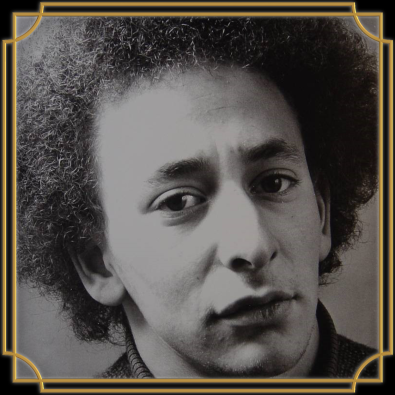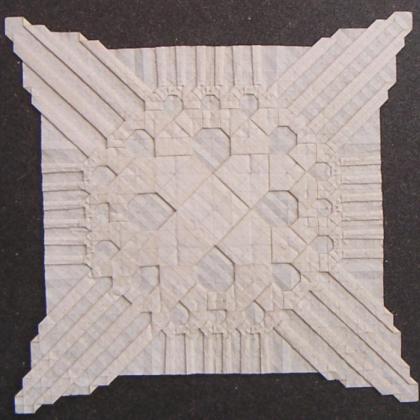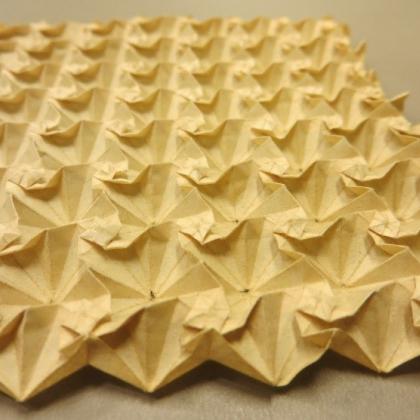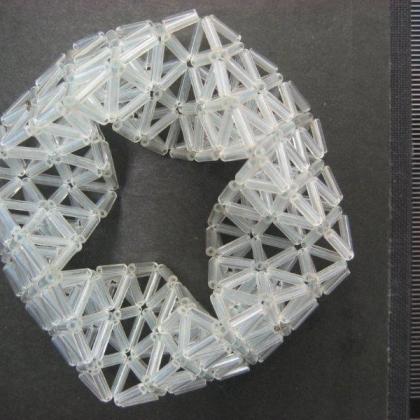Primary tabs

Frank van Kollem
Amsterdam
Netherlands
Summary
Frank van Kollem (1949 - 1997) was a Dutch folder, considered to be one of the earlier folders of the technique called tessellations and corrugations. Most of his work is made from white paper and is very small. For him, it was not unusual to start with a paper 15cm square and divide it in 64th with all the diagonals before starting to fold a tessellation.
Life/Biography
Frank was born in 1949. He lived in Amsterdam. He was a special and striking person, from childhood he was different from the people around him. In primary school, his behavior was labeled as deviant. Frank didn't play with his classmates, he behaved differently. He was an outsider. This did not change as he got older. He remained an outsider, someone who lived in a world of his own. At a young age, he proved to be very talented in the fields of language and mathematics. He did not finish high school, he often asked 'difficult' questions in class. Nevertheless, he was able to discuss all kinds of subjects at a high level with a professor of physics.
In the mid-sixties there was an origami artist in the Stedelijk Museum in Amsterdam. Frank went there and became interested in origami. At first, he folded animals, mostly of two parts or with three legs, as in the books of Kunihiko Kasahara and Isao Honda from that time. He found this unsatisfactory and soon he started experimenting. Frank was a highly gifted person with a penchant for exact sciences. He found folding interesting, figurative models less so. He started folding paper in a different way, more in a mathematical way. Today we call these tessellations.
Before Frank started his special folding work, he was always involved with forms of manual labor that expressed his fascination for mathematics. For example, he made complicated three-dimensional constructions from glass beads strung together. He made sure that the wire never crossed straight but always went to a neighboring bead. Other examples of his creative ability are the crochet wallets, made from two colors of buttonhole yarn, in which he incorporated series of numbers or letter combinations as a pattern.
After his death, his mother Eva Wolf donated his work to the Royal Dutch Library in The Hague. It contains apart from other objects, more than 100 different tessellations.
Exhibitions
2004, Paper Biënnal, Rijswijk
2005-11-03, Royal Library, The Hague
External link: National Library of the Netherlands
This article was authored by P. Versnick





